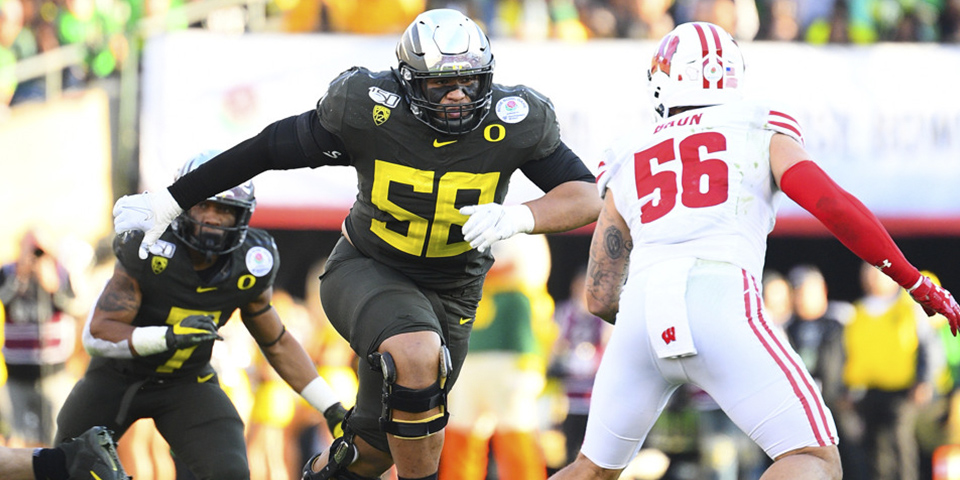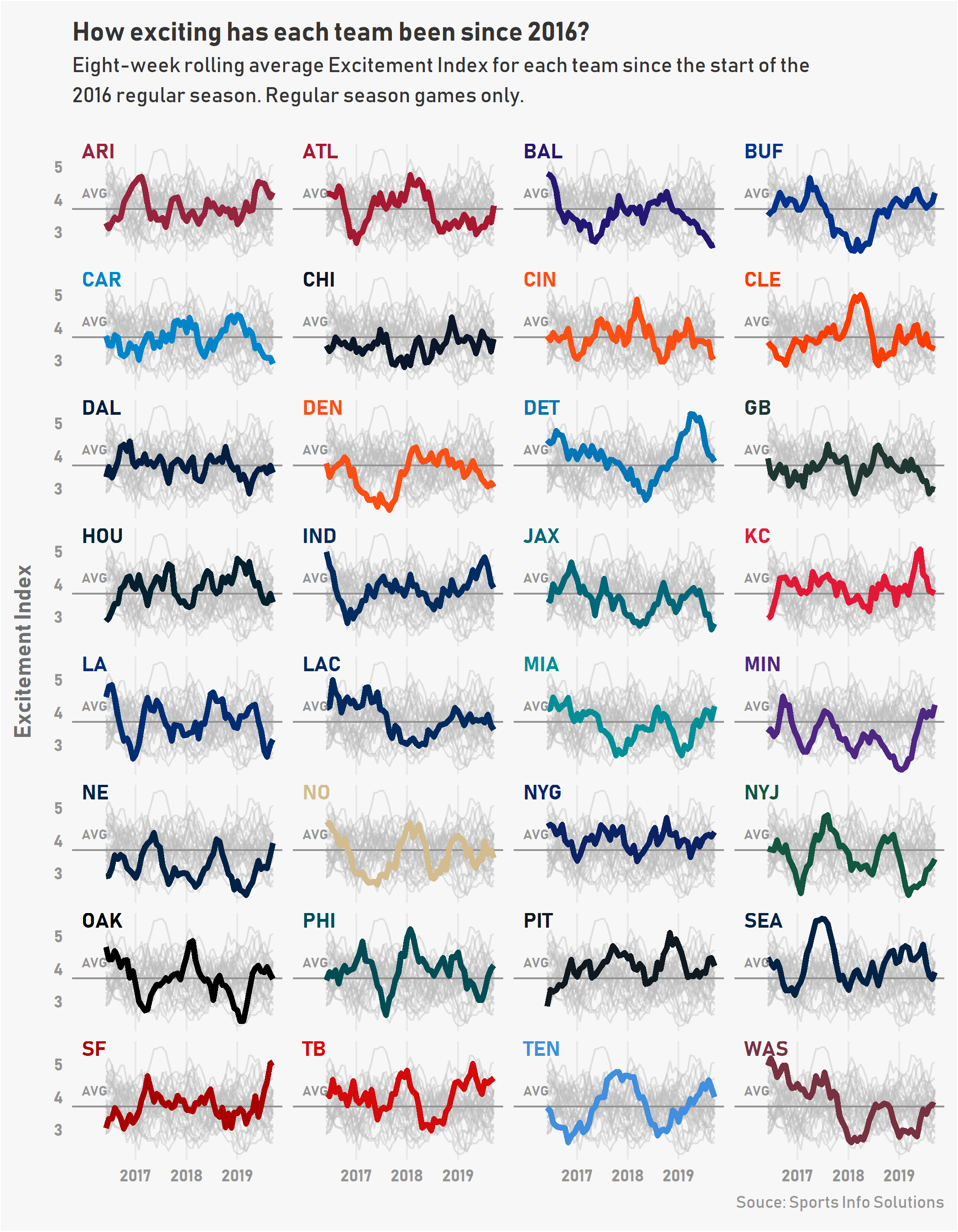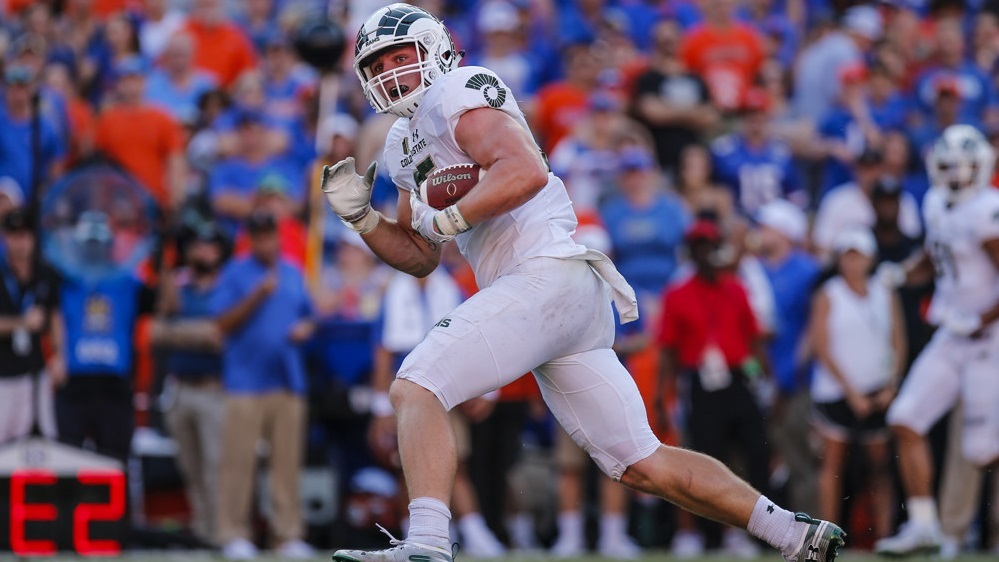Everyone has heard the term “NFL-Ready” prospect. These are players who are deemed to have the skills, talent, and football IQ to make an immediate impact when their time comes to take the field. This opportunity usually comes sooner rather than later for these types of players, but some situations arise where they still have to wait their turn (looking at you, Patrick).
In trying to quantify this immediate production, we looked at a player’s draft position to see if there were any significant differences in their Total Points production in their first handful of games. Are these immediate impact players all taken early, or are there more to be found in later rounds? We try to answer this question here with our company’s favorite stat, Total Points.
Methodology
Going back to the 2016 NFL Draft, we looked at players who have played in at least 4 games and played at least 40 snaps in their first 4 games. We then took the average Total Points value of those first 4 games for each relevant category (e.g. Receiving Total Points for WR). After accumulating the player averages, we then took the overall average at each position based on if that player was selected in the first round or not and if a player was taken in the early rounds (1, 2, or 3) or the late rounds (4, 5, 6, 7, or undrafted).
Once the averages were taken, we used a Standard T-Test, Welch T-Test, or a Wilcoxon Signed Rank Test to compare the averages and test whether or not first round or early round players have a higher average compared to their counterparts. The test used was decided based on whether or not the data subsets were normal based on a Shapiro-Wilk test. If the data subset was normal, we used a version of a T-Test. If not, we used the Wilcoxon Signed Rank Test. The type of T-Test was determined by whether or not the two data subsets shared the same variance (Standard or Welch).
In each case, we are testing the null hypothesis that the Total Points means between each group are equal to each other. If the test yields a p-value less than 0.01, our alpha level, then we reject that the null hypothesis is true. In the tables below, you will find whether or not the test was found to be significant (p-value less than 0.01) and the average Total Points per game value of each group that was compared.
This is not a test of the complete performance of a player’s career, but rather the chance of having an immediate impact once they get their opportunity.
Enough stat talk, let’s dive into some of the results!
Quarterbacks
| Total Points Category | Draft Groups | Significant? | First/
Early Round Mean |
Other/
Late Round Mean |
| Passer Points | First Round/
Not First Round |
No | 2.50 | 1.16 |
| Passer Points | Early Round/
Late Round |
No | 2.11 | 1.20 |
Analyzing Passer Total Points among quarterbacks, we see that we cannot reject the null hypothesis that the means of a quarterback’s first 4 games are the same regardless of how we split players up. Even though the means look different, we cannot statistically infer that the compared populations have different average production.
Consider this when a quarterback makes his first start. Regardless of the round selected, quarterbacks have produced right away from all rounds within the draft. The Top 3 quarterback Passer Total Points averages come from Patrick Mahomes (1st Round, 10.2), Dak Prescott (4th Round, 9.5), and Cody Kessler (3rd Round, 7.9). Immediate production from the signal caller can be found at any point throughout the draft.
Wide Receivers/Tight Ends
| Position | Total Points Category | Draft Groups | Significant? | First/
Early Round Mean |
Other/
Late Round Mean |
| WR | Receiver Points | First Round/
Not First Round |
Yes | 0.92 | 0.16 |
| WR | Receiver Points | Early Round/
Late Round |
Yes | 0.51 | 0.08 |
| TE | Run Block Points | First Round/
Not First Round |
No | 0.34 | 0.25 |
| TE | Run Block Points | Early Round/
Late Round |
No | 0.26 | 0.25 |
| TE | Receiver Points | First Round/
Not First Round |
Yes | 0.53 | 0.09 |
| TE | Receiver Points | Early Round/
Late Round |
Yes | 0.30 | 0.03 |
For both wide receivers and tight ends, Receiving Total Points shows a significant difference in both tests favoring the first/early rounds.
Among receivers, Terry McLaurin (1st Round, 4.30), Will Fuller V (1st Round, 2.69), Justin Jefferson (1st Round, 2.40), Marquise Brown (1st Round, 2.16), and Ja’Marr Chase (1st Round, 2.06) all come in the Top 5 for Receiving Total Points. No shortage of top end talent and pedigree for sure.
The Top 3 tight ends in Greg Dulcich (3rd Round, 1.38), Gerald Everett (2nd Round, 1.31), and Kyle Pitts (1st Round, 1.28) all came in the early rounds as well. Run Blocking Total Points from a tight end perspective are not statistically different from one another depending on when they were selected.
Defense
When comparing the first to the other rounds, every defensive position and relevant Total Points Category is statistically significantly better. This suggests that defensive talent that is taken in the first round has a higher impact when it takes the field in its first 4 games than a player that is taken later. When comparing the early and late rounds, there were several other positions with Total Points categories that were significant, but the more consistent effect was found in the first and other round comparisons.
Furthermore, below is a table of the players with the highest impact of each position at the most relevant Total Points Category. All of these players come from either the first or second round.
| Position | Player | Total Points Category | Total Points Value | Round Drafted |
| DT | Derrick Brown | Run Defense | 1.44 | 1st |
| DE | Nick Bosa | Pass Rush | 3.07 | 1st |
| LB | Devin Bush | Run Defense | 1.67 | 1st |
| DB | Asante Samuel Jr. | Pass Coverage | 6.11 | 2nd |
Other Positions
The two positions not covered above, running backs and offensive linemen, yielded different results. There was no Total Points category that showed a significant difference for running backs when considering Rushing and Receiving Total Points. On the other hand, both Pass Block and Run Block Total Points showed significant differences in both group types for offensive linemen.
Conclusion
The TLDR summary of this study would be: The idea that early draft picks outperform late picks in the receiving game from the jump is interesting, particularly because that hasn’t been the case for passing or rushing.
All in all, only quarterbacks, running backs, and run blocking tight ends did not show significantly different averages between players selected in the first/early rounds when compared to the other/late rounds. Again, these results suggest performance differences for players playing in their first 4 games. These results do not conclude anything about long-term performance. To put it in fantasy terms, think picking up a receiver on the waiver wire for one week vs. picking a receiver in a rookie draft for a dynasty league.
Getting early production can come from a lot of different places in the draft. Finding that production is very position dependent, but can also vary among different situations. Consider these findings when building expectations for the new players on your favorite team in what they might be able to accomplish early on in their careers.



